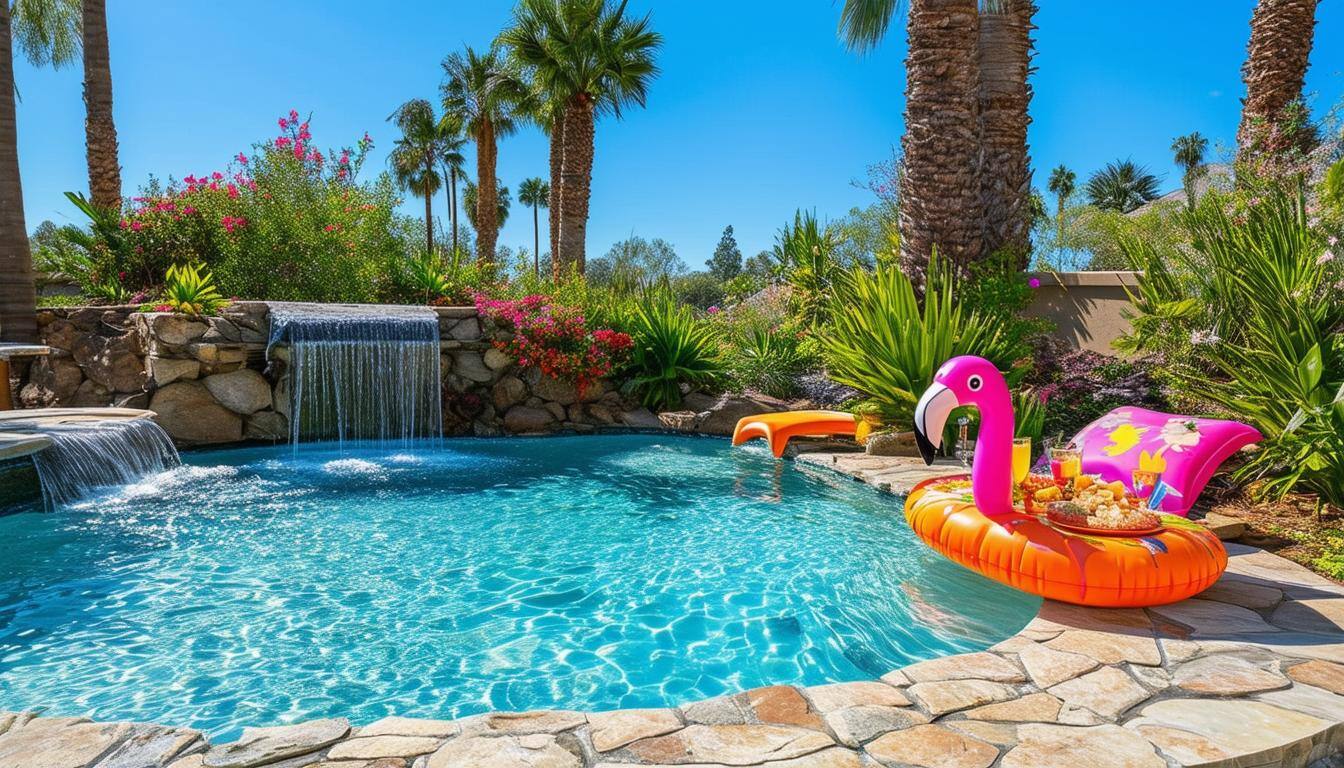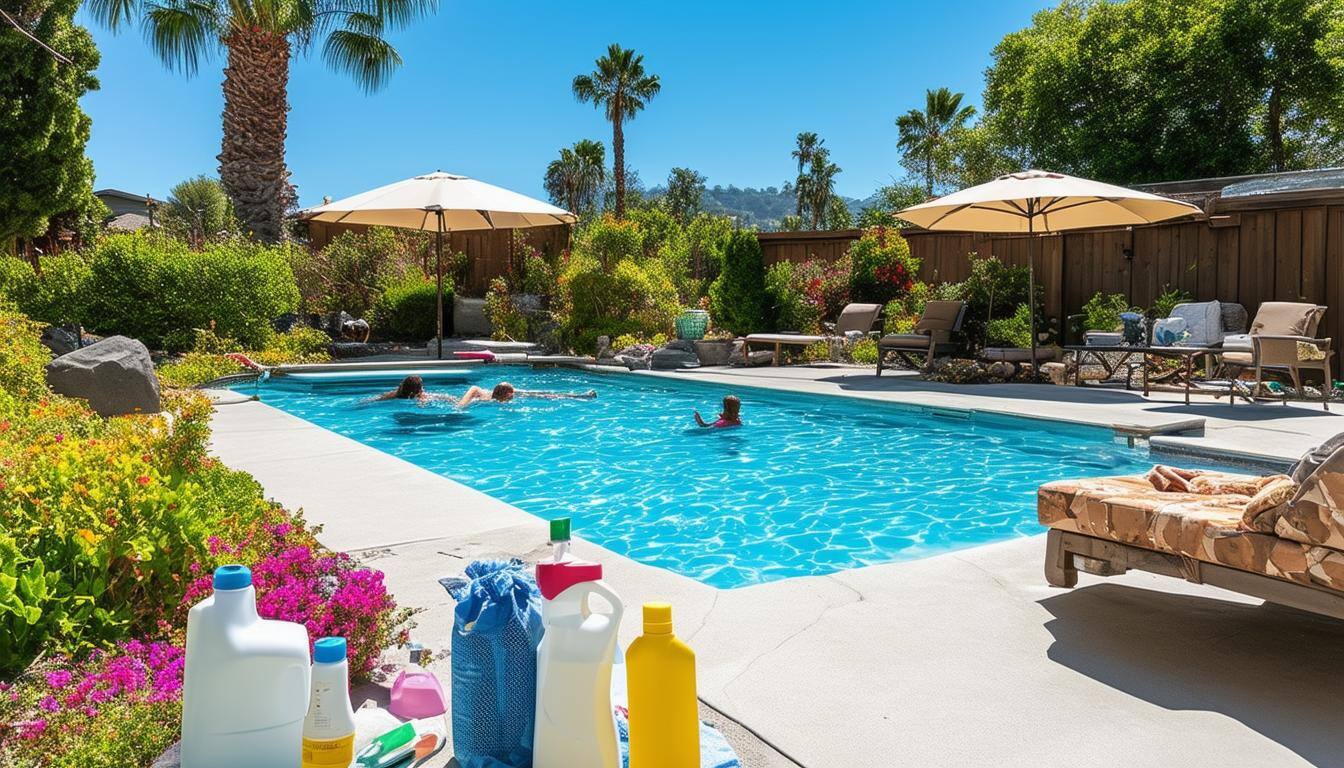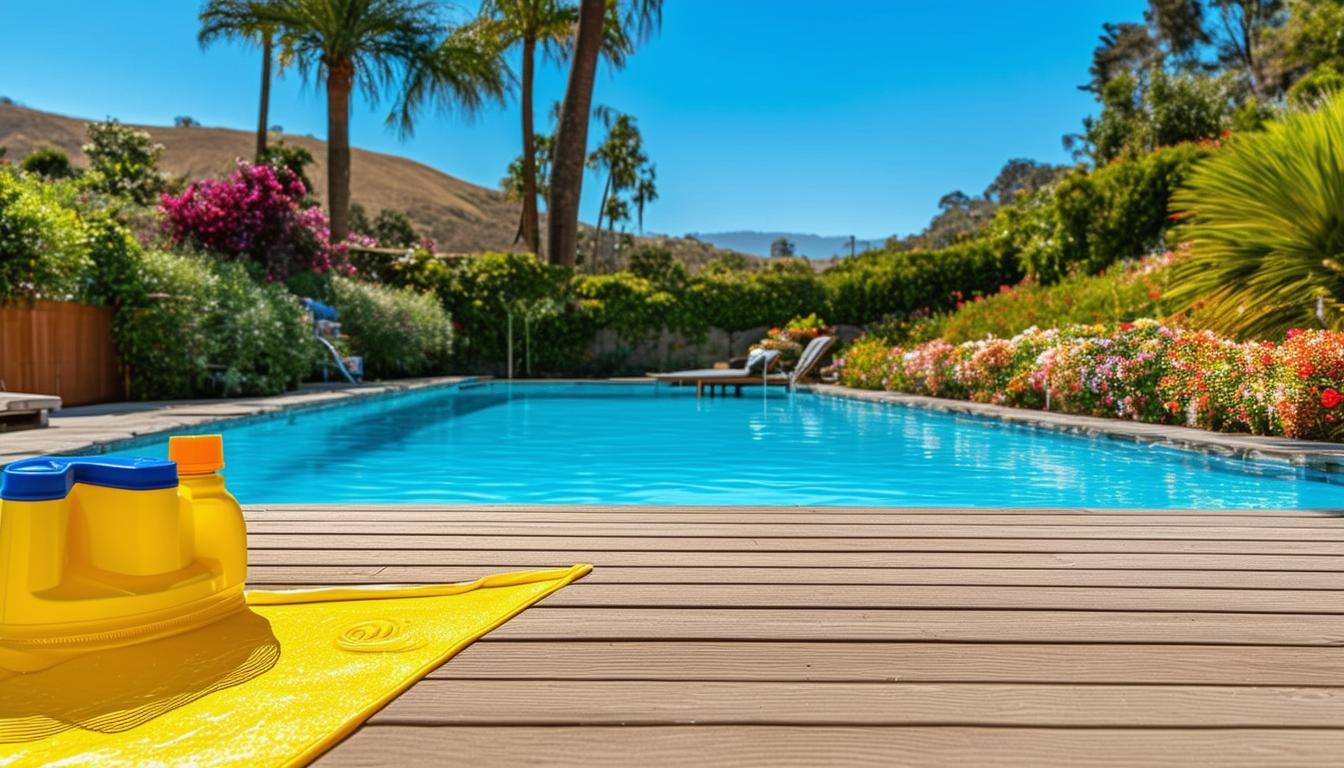How to Fix the Top 10 Common Pool Problems

Many Southern Californians dream of owning a pool in their backyard, where they can relax and entertain themselves. However, pool ownership comes with its challenges. Even well-maintained pools occasionally have problems, from cloudy water to stubborn algae. The good news is that most issues have straightforward solutions.
This guide will explore common pool problems, their causes, and how to fix them.
1. Cloudy or Murky Water
Symptoms:
Water appears hazy, dull, or unclear.
Causes:
- Imbalanced pH or chlorine levels.
- Poor filtration or inadequate circulation.
- High levels of debris, oils, or contaminants.
Solutions:
- Test Water Chemistry: Check and balance pH (7.2–7.6), chlorine (1.0–3.0 ppm), and alkalinity (80–120 ppm).
- Shock the Pool: Use a pool shock treatment to eliminate contaminants.
- Clean the Filter: Backwash sand or DE filters or rinse cartridge filters.
- Run the Pump: Ensure your pump runs at least 8–12 hours daily for proper circulation.
2. Algae Growth
Symptoms:
Green, yellow, or black patches on walls, floors, or water.
Causes:
- Low chlorine levels.
- Poor water circulation.
- Warm temperatures combined with high phosphate levels.
Solutions:
- Brush Affected Areas: Using a pool brush removes visible algae from walls and floors.
- Shock the Pool: Apply an algaecide or chlorine shock to kill algae.
- Clean the Filter: Algae can clog your filter, so clean it thoroughly after treatment.
- Prevent Future Growth: Maintain proper chemical levels and ensure consistent filtration.
3. Scaling or Calcium Deposits
Symptoms:
White, chalky buildup on tiles, walls, or waterline.
Causes:
- High calcium hardness (common in Southern California’s hard water).
- Imbalanced pH or alkalinity.
Solutions:
- Adjust Water Chemistry: Lower pH and alkalinity to dissolve existing calcium deposits.
- Scrub Deposits: Use a pumice stone or a tile cleaner specifically designed for pools.
- Install a Scale Inhibitor: Products like sequestering agents can prevent future scaling.
4. Low Water Levels
Symptoms:
The waterline drops below the skimmer opening.
Causes:
- Evaporation (standard in Southern California’s dry climate).
- Leaks in plumbing, fittings, or the pool structure.
Solutions:
- Refill the Pool: Add water to maintain proper levels.
- Check for Leaks: Inspect plumbing, equipment, and pool surfaces for cracks or drips.
- Use a Cover: Reduce evaporation by covering your pool when not in use.
5. Eye or Skin Irritation
Symptoms:
Red, itchy eyes or skin after swimming.
Causes:
- Imbalanced pH or high chlorine levels.
- Presence of chloramines (formed when chlorine combines with contaminants).
Solutions:
- Test and Balance Water: Keep pH between 7.2 and 7.6 to minimize irritation.
- Shock the Pool: Remove chloramines by shocking the pool with chlorine.
- Rinse After Swimming: Shower after swimming to remove any residual chemicals.
6. Clogged or Ineffective Filters
Symptoms:
Poor water clarity or reduced flow from return jets.
Causes:
- Excess debris in the filter.
- Failure to clean or backwash regularly.
Solutions:
- Clean the Filter: Backwash sand or DE filters or rinse cartridges.
- Replace Media: For optimal performance, sand and DE filters may need new media periodically.
- Inspect for Damage: Check for cracks or tears in filter components.
7. High Chlorine Odor
Symptoms:
Strong chlorine smell around the pool.
Causes:
- Excessive chloramines are in the water, but no high chlorine levels exist.
Solutions:
- Shock the Pool: Break down chloramines with a chlorine shock treatment.
- Maintain Proper Chlorine Levels: Keep chlorine between 1.0–3.0 ppm.
- Improve Circulation: Ensure your pump and filter are running effectively.
8. Pool Pump Won’t Start
Symptoms:
The pump doesn’t turn on, or it stops running unexpectedly.
Causes:
- Electrical issues or tripped breakers.
- Overheating due to lack of ventilation.
- Clogged pump basket or impeller.
Solutions:
- Check Power Supply: Ensure breakers are on and power connections are secure.
- Inspect the Pump Basket: Remove debris from the basket and impeller.
- Ensure Ventilation: Keep the pump area clear of debris to prevent overheating.
9. Foamy Water
Symptoms:
Bubbles or foam on the pool surface.
Causes:
- Excessive use of pool chemicals, soaps, or lotions.
- Low calcium hardness.
Solutions:
- Reduce Chemical Use: Avoid adding excessive algaecides or clarifiers.
- Balance Calcium Hardness: Maintain levels between 200–400 ppm.
- Skim and Vacuum: Remove foam-producing debris.
10. Heater Not Working
Symptoms:
Pool water remains cold despite the heater being on.
Causes:
- Clogged or dirty filters reduce water flow.
- Thermostat issues or mechanical failure.
Solutions:
- Check the Filter: Clean or backwash the filter to improve water flow.
- Inspect Heater Components: Look for error codes or consult the manual.
- Call a Professional: Complex repairs should be handled by an expert.
Conclusion
Maintaining a pool in Southern California can present unique challenges, but understanding common problems and their solutions can save you time and money. Regular maintenance, proper water chemistry, and attentive care will keep your pool inviting and trouble-free.
If you own a pool in Murrieta, Wildomar, or Temecula and need professional assistance or a local pool service business looking to grow, contact us for expert advice and tailored marketing strategies to help your business thrive!

